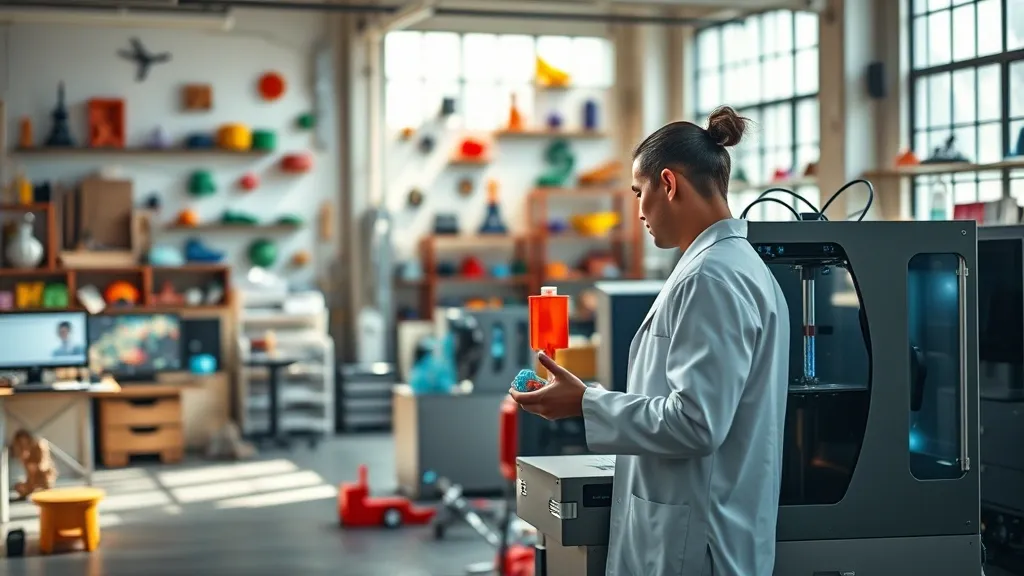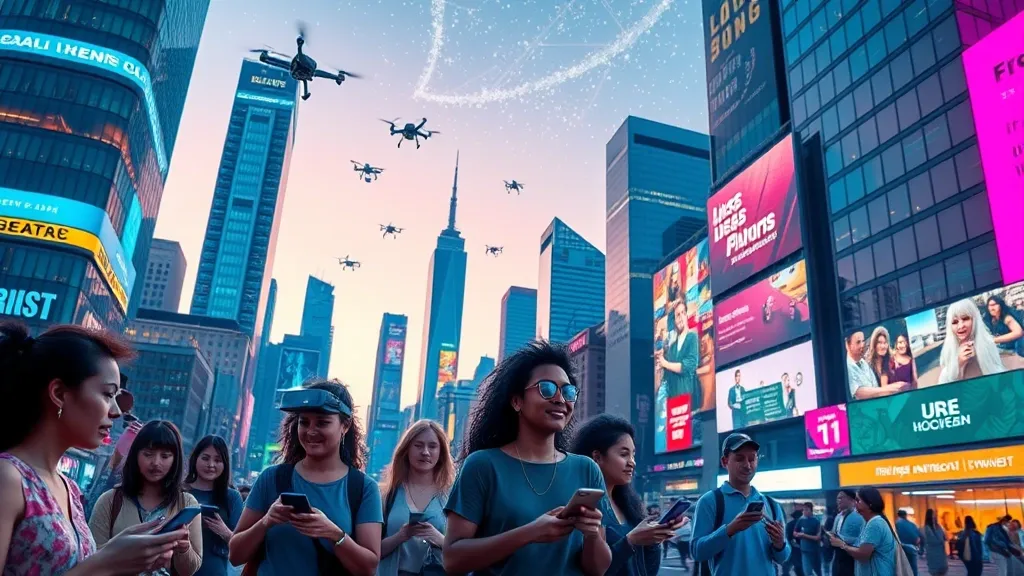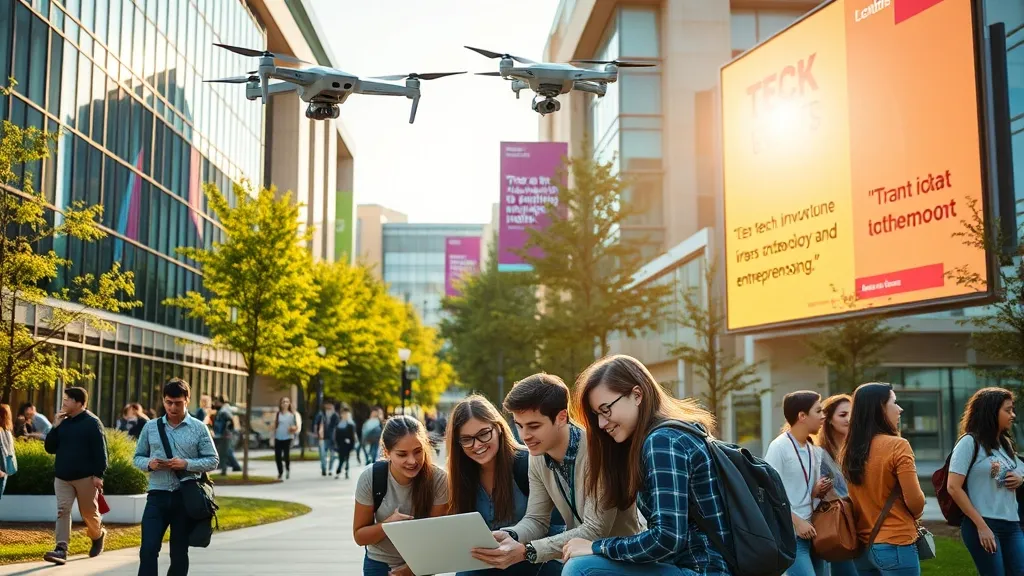From Pixels to Products: The Rise of 3D Printing in Manufacturing
Okay, let’s chat about 3D printing. You know, that magical technology where you can basically turn a digital design into a real-life object? It’s like something straight outta sci-fi, but here we are in 2023, and it’s reshaping manufacturing like a boss. Seriously, if you told me a few years ago I’d be able to whip up a custom phone case from my laptop, I would’ve called you a wizard.
So, what’s the deal with 3D printing? Well, it’s all about creating stuff layer by layer. Imagine building a cake, but instead of frosting, you’re using plastic, metal, or even bio-materials. It’s pretty wild! Gone are the days when companies had to rely on traditional manufacturing methods, which often involved a ton of waste and lengthy lead times. Now, with 3D printing, you can design, tweak, and produce on the fly. It’s like having a mini factory right at your fingertips!
One of the coolest things about 3D printing is its ability to create complex shapes that would be a total pain to make using traditional methods. This means more innovation and creativity in product design. From aerospace to healthcare, industries are diving in headfirst. I mean, can you believe they’re even printing prosthetic limbs? That’s some next-level stuff.
- Customization: Everyone loves a little personal touch, right? 3D printing allows for tailored products without the hefty price tag.
- Speed: Need something fast? 3D printing can cut down production time significantly. Say goodbye to long waits!
- Less Waste: Traditional manufacturing can be wasteful, but 3D printing is, like, way more efficient.
Of course, it’s not all sunshine and rainbows. There are challenges to tackle, like material limitations and the need for skilled operators. But hey, every new tech has its hiccups, right? As we keep pushing the boundaries, I’m excited to see where 3D printing takes us next. Maybe one day I’ll be able to print my own burrito. Now that would be something!
In the grand scheme of things, 3D printing is a game-changer. It’s not just about making things; it’s about making things smarter, faster, and more personalized. And honestly, who wouldn’t wanna be part of that? Buckle up, because the future is looking pretty 3D!
Beyond the Screen: How 3D Technology is Revolutionizing Healthcare
Okay, so let’s talk about something that’s pretty mind-blowing: 3D technology in healthcare. I mean, who would’ve thought that a technology mostly associated with gaming and movies could actually save lives? It’s like something out of a sci-fi movie, but nope, it’s the real deal!
First off, let’s get into 3D printing. This isn’t just about printing out a cute little figurine of your favorite pet—although that’d be fun too. In the healthcare world, 3D printing is creating custom prosthetics, implants, and even organ models for surgeons to practice on before the real thing. Imagine a doctor being able to hold a perfect replica of a patient’s heart before doing surgery. That’s next-level stuff!
Then there’s the whole “digital twin” concept. Picture this: a virtual copy of a patient that helps doctors simulate treatments and predict outcomes. It’s like having a video game character, but instead of just battling monsters, you’re battling diseases. Pretty cool, right? And the best part is, it helps in personalizing treatment plans. Doctors can tailor their approach based on how that digital twin reacts. It’s like having a cheat sheet for health!
- Enhanced Surgical Precision: Surgeons can use 3D models to plan complex surgeries, which boosts confidence and minimizes risks.
- Cost-Effective Solutions: Printing custom tools and implants can actually save hospitals money in the long run.
- Rapid Prototyping: Need a new device or tool? Just whip it up in 3D and test it out. Gone are the days of lengthy approval processes!
But, let’s not forget about education. Medical students and professionals can practice on 3D-printed models that replicate real human anatomy. It’s way more hands-on than just staring at textbooks or PowerPoints. Plus, it gives them the confidence to tackle real patients later on. You wouldn’t want your surgeon to have only ever seen a heart in a book, right?
In short, 3D technology is changing the game in healthcare, making it more efficient, personalized, and just plain awesome. Sure, there are challenges to overcome, like regulations and ensuring quality, but I’ve got a feeling we’re just scratching the surface of what’s possible. Who knows? Maybe one day we’ll all have 3D-printed organs. Just don’t ask me to donate mine—I kinda like it the way it is!
Fashion Forward: The Unexpected Impact of 3D Design on Style and Sustainability
Okay, let’s talk fashion. You know, that thing we all love but sometimes feel so guilty about? Well, 3D design is here to shake things up! It’s not just about looking good anymore; it’s also about feeling good about what you wear. Seriously, 3D printing and design are flipping the fashion industry on its head in the best ways possible.
First off, let’s chat about creativity. With 3D design, designers can go wild. I mean, we’re talking about creating pieces that are totally out of this world—like, you might even see a dress that looks like it’s from a sci-fi movie! Designers can easily experiment with shapes, textures, and materials without the usual constraints of traditional fashion production. It’s like having a never-ending box of crayons but for clothes. Who wouldn’t want that?
Now, let’s not forget about sustainability. The fashion industry has a, um, pretty notorious reputation for being one of the biggest polluters. But with 3D printing, it’s like someone hit the reset button. You can create just what you need, which means less waste. Instead of cranking out tons of items that might not even sell, brands can produce on demand. Bye-bye, excess inventory!
- Less waste: Seriously, we’re talking about reducing fabric scraps and materials that just get thrown away.
- Local production: Imagine if your favorite brand could produce right in your city. Less shipping means a smaller carbon footprint!
- Innovative materials: Designers are experimenting with biodegradable and recycled materials, which is like a win-win for Mother Earth.
But wait, there’s more! The customization factor is a game-changer. You can get that perfect fit or style you’ve always wanted. Like, who hasn’t struggled to find jeans that don’t make you feel like a stuffed sausage? With 3D design, you can have clothes made just for you—no more one-size-fits-all nonsense!
So, yeah, 3D design is not just some tech fad. It’s reshaping how we think about fashion, style, and our planet. The future’s looking pretty fashionable, and I’m here for it! Who knew tech could be this chic?
Building Tomorrow: The Transformative Power of 3D in Architecture and Urban Planning
You know, when I think about architecture and urban planning, I can’t help but picture those old-school blueprints, all rolled up and dusty. But hey, we’re in the 21st century now, and 3D technology is flipping the script in a big way. Seriously, it’s reshaping how we design, plan, and build our cities. It’s like giving architects superpowers!
First off, let’s talk about visualization. Remember trying to imagine what a building would look like from a 2D sketch? Yeah, good luck with that! With 3D modeling, architects can create lifelike representations of their designs. It’s like having a sneak peek into the future. Clients can walk through virtual spaces, making it easier to understand the flow and feel of a space. I mean, who wouldn’t want to take a virtual stroll through their future home while still in their pajamas?
Then there’s the whole collaboration aspect. In the past, sharing ideas meant endless meetings and lots of back-and-forth. Now, with 3D models, everyone can jump in and see exactly what the other person is talking about. Designers, engineers, and clients can all be on the same page—no more “I thought you meant this!” misunderstandings. It’s like group projects in school, but this time, everyone actually likes what they’re doing.
- Efficiency: 3D technology speeds up the design process. No more endless revisions on paper. Changes can be made in real-time, saving tons of time and resources.
- Sustainability: With 3D modeling, architects can analyze environmental impacts before construction starts. This means better, eco-friendly designs that can help combat climate change. Yay for saving the planet!
- Community Engagement: Urban planners can use 3D models to engage communities in the planning process. People can visualize changes in their neighborhoods, making it easier to gather feedback. No more surprises when a high-rise pops up next to your house!
So, whether it’s designing an eco-friendly skyscraper or reimagining a public park, 3D technology is making waves in architecture and urban planning. It’s all about creating spaces that people love and that work for the environment. Can’t wait to see what the future holds! Maybe one day, we’ll all just have holographic houses. Now that’d be cool.



